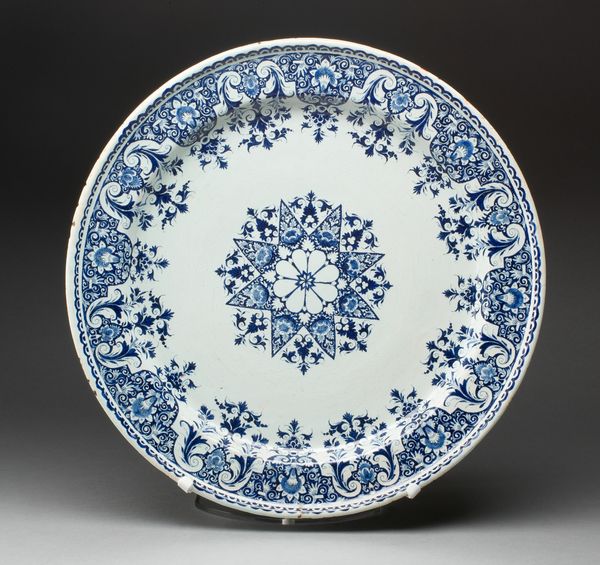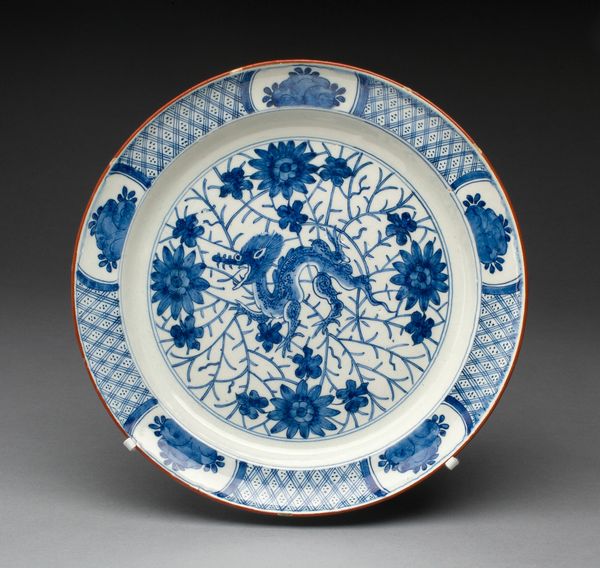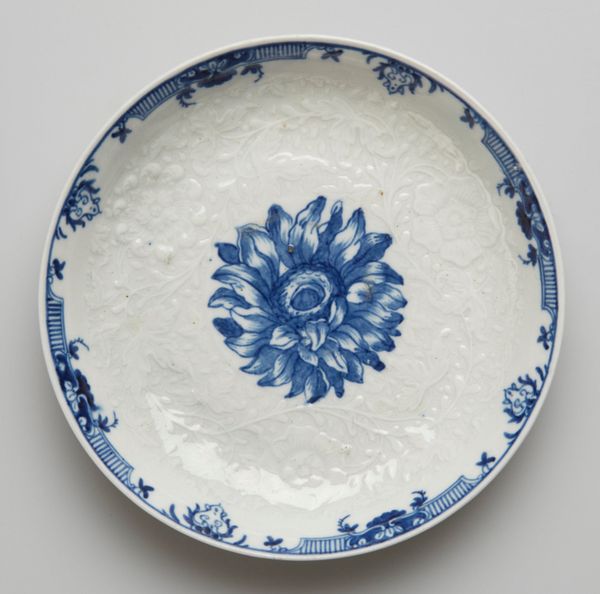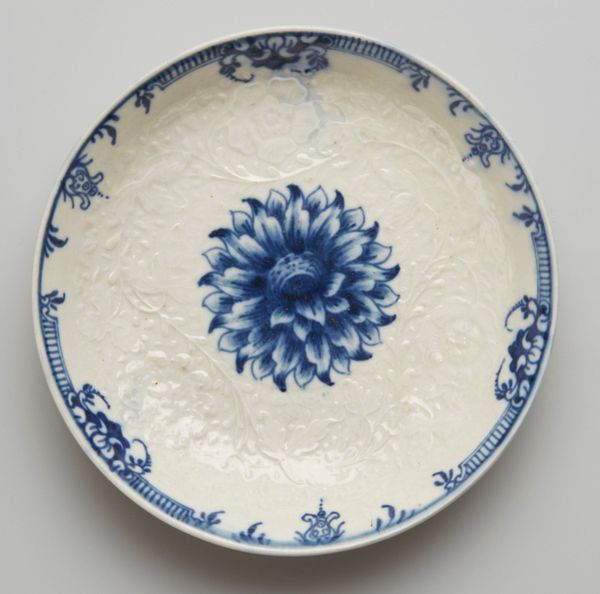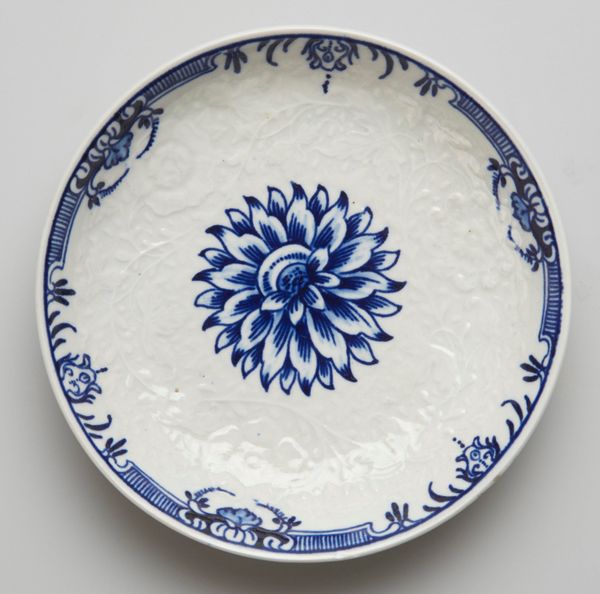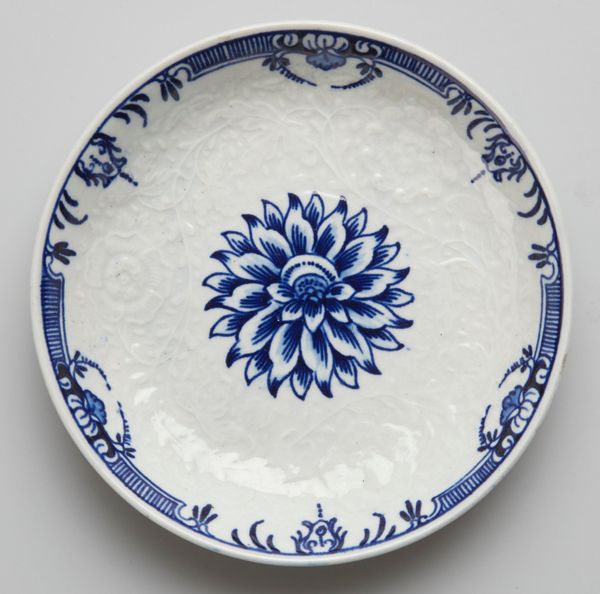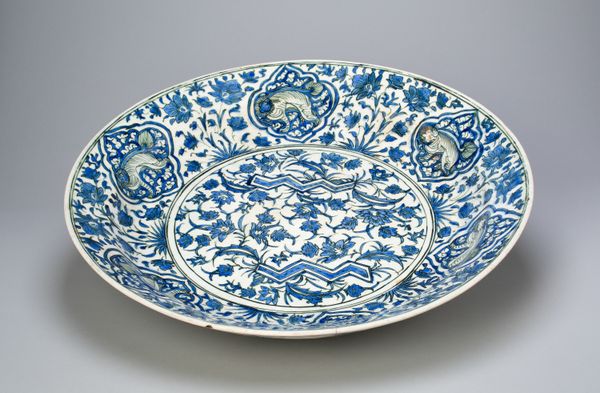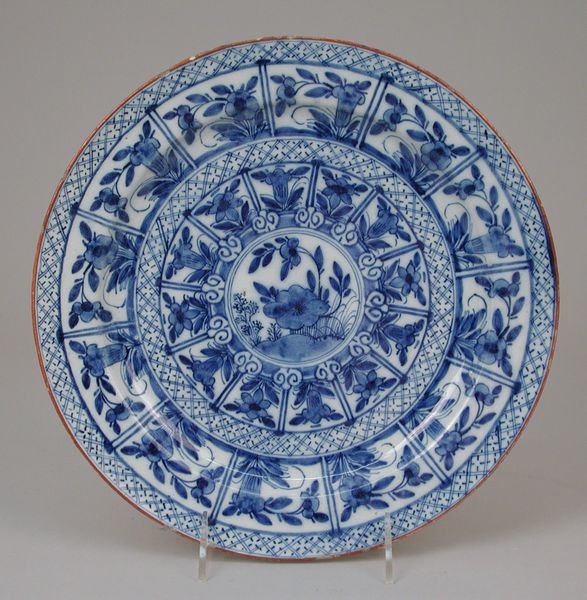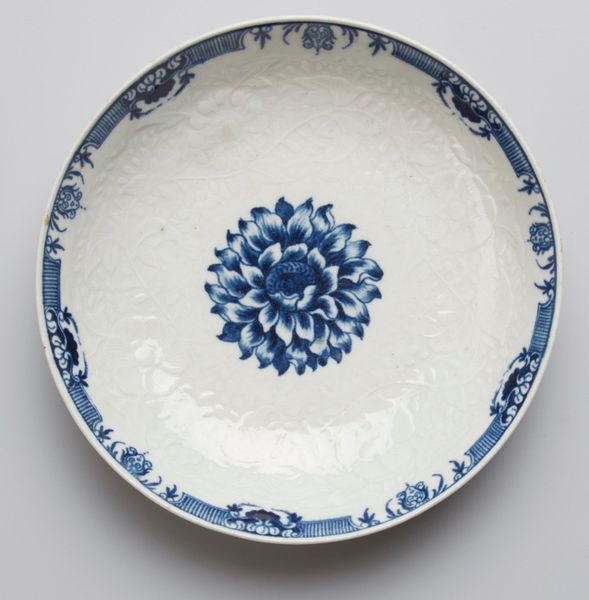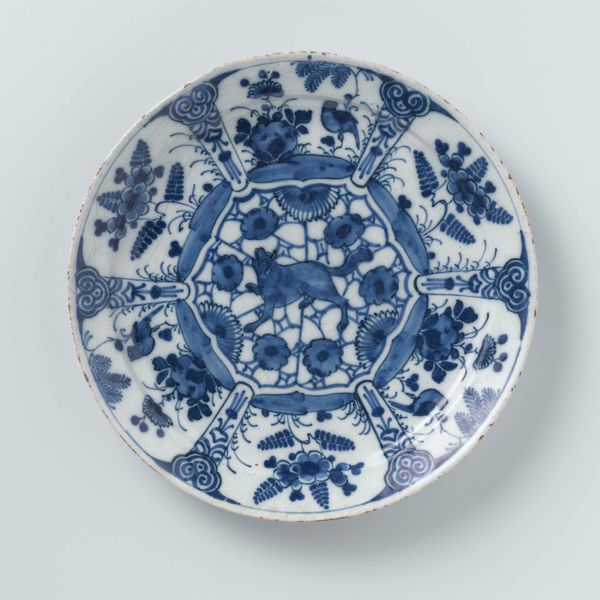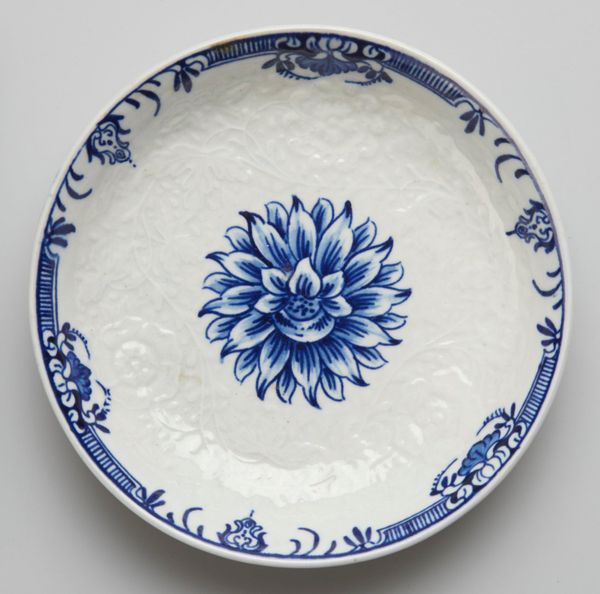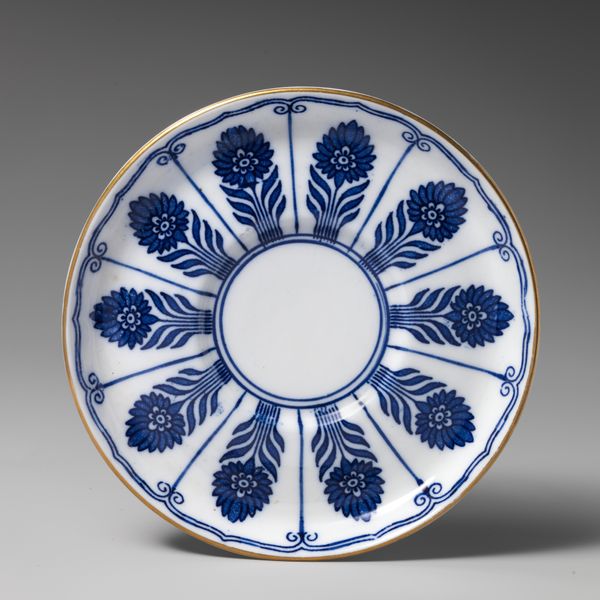
ceramic
#
decorative element
#
baroque
#
ceramic
#
form
#
vessel
#
ceramic
#
islamic-art
#
decorative-art
Dimensions: 6.7 × 55.3 cm (2 5/8 × 21 3/4 in.)
Copyright: Public Domain
Editor: Here we have a ceramic platter, likely dating between 1700 and 1720, created by Rouen Potteries. I am struck by how ornate the decoration is, but with a very limited color palette. What cultural echoes do you see in this piece? Curator: The prominent blue and white, and the symmetrical designs are definitely channeling Eastern motifs. Though created in France, it draws heavily on the symbolic language of imported Chinese porcelain, immensely popular at the time. Notice the almost calligraphic nature of the floral patterns. Do you see how the center medallion acts as a focal point, almost like a mandala in its intricate repetition? Editor: I do. It almost feels like it is inviting contemplation, and I'm guessing that feeling was quite intentional? Curator: I would argue so. Ceramics like these were signifiers of wealth and taste but, also, became potent symbols in asserting social identity. This seemingly decorative object reveals much about cultural exchange, imitation, and adaptation during a specific historical moment. What kind of narratives do you think these symbols convey? Editor: It makes me think about the complexities of trade and the desire for exoticism. It’s interesting to think that a platter can speak to such intricate and powerful themes! Curator: Precisely! By examining visual symbols we see reflections of cultural memory. Hopefully, we understand just how interwoven historical narratives can be!
Comments
No comments
Be the first to comment and join the conversation on the ultimate creative platform.
